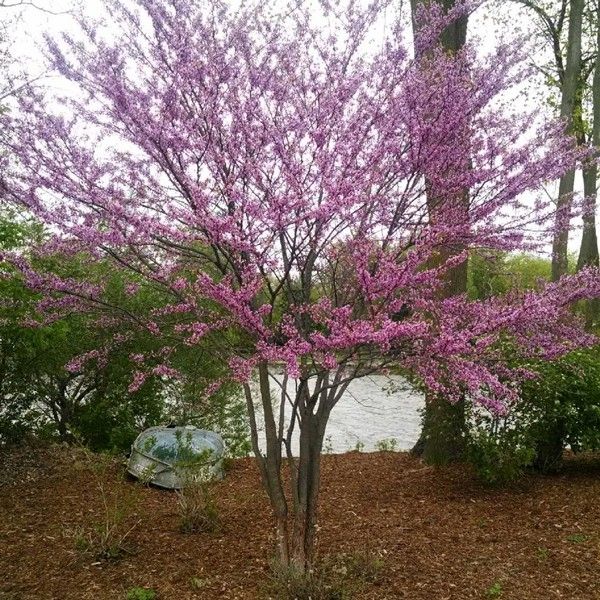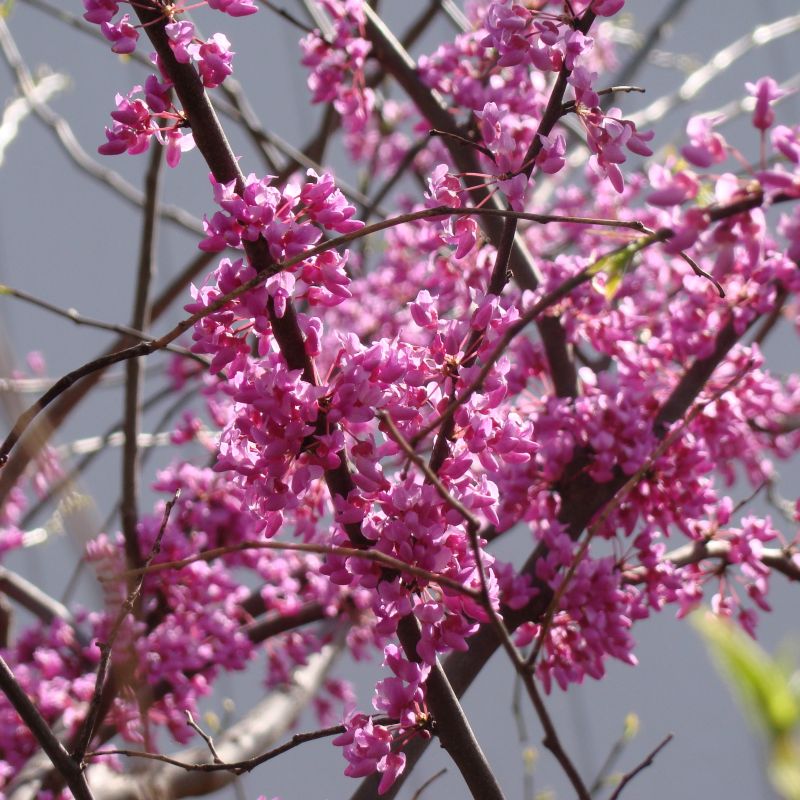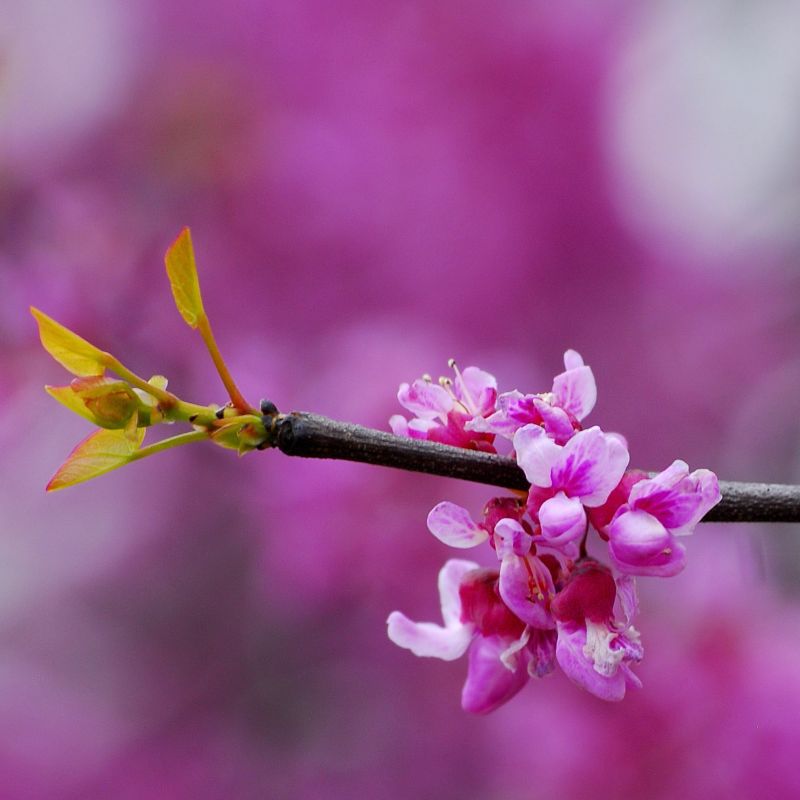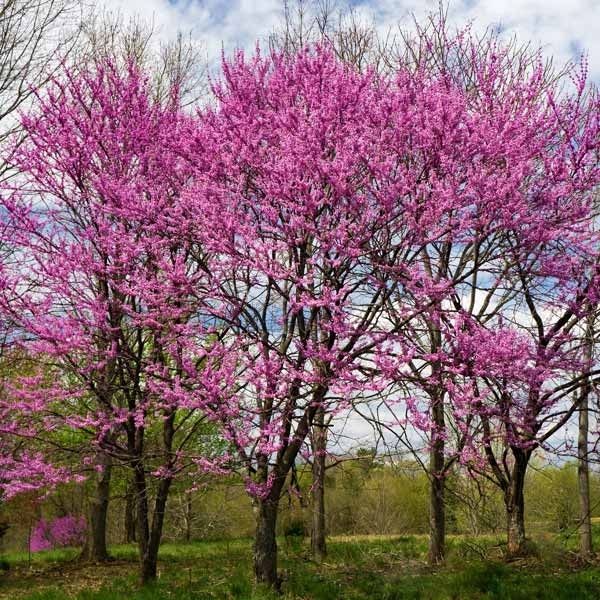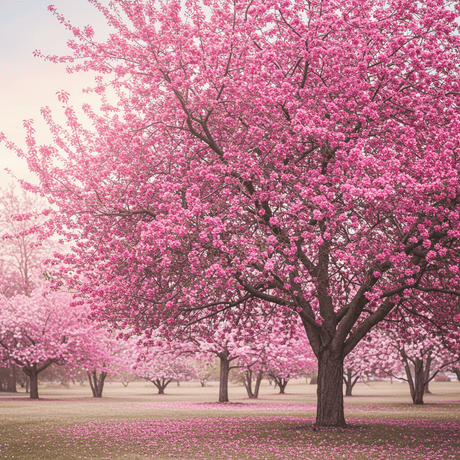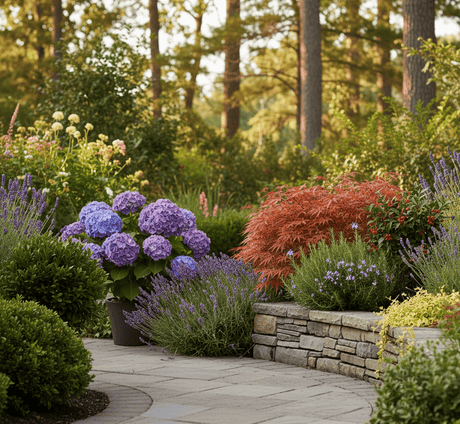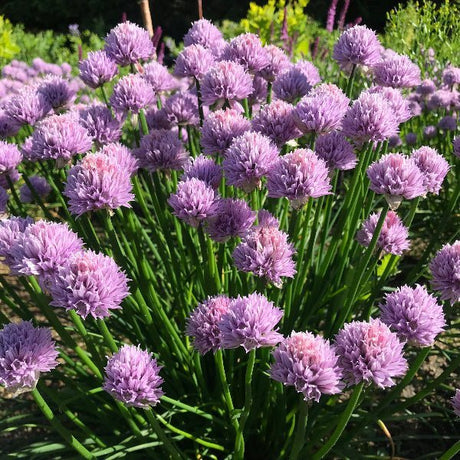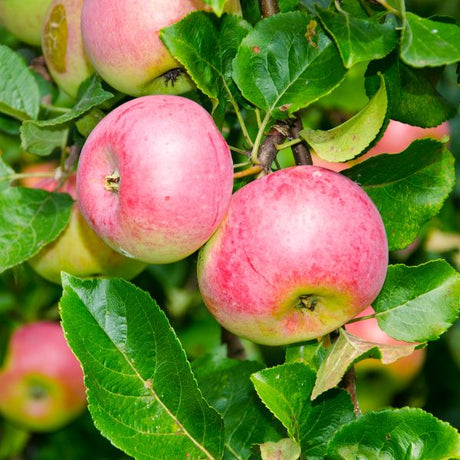Eastern Redbud
Cercis canadensis
- Stay Protected with Plant Sentry ™
Eastern Redbud - #3 Container 4-5 Feet Single Stem is backordered and will ship as soon as it is back in stock.
Plant Sentry™
Plant Sentry™

Plant Sentry™ Protected
Your order is protected by our compliance system that:
- Prevents restricted plants from shipping to your state
- Ensures plants meet your state's agricultural requirements
- Protects gardens from invasive pests and diseases
Delivery and Shipping
Delivery and Shipping
Delivery and Shipping
Fast, Safe Plant Delivery
Ships in 3-4 business days • Tracking provided • Weather protected
| Under $50 | $9.99 |
| $50 - $99.99 | $14.99 |
| $100 - $149.99 | $16.99 |
| $150 - $198.99 | $24.99 |
| $199+ | FREE |
✓ Zone-specific timing • ✓ Professional packaging • ✓ Health guarantee
Understanding Plant Options
Nature Hills offers plants in two main formats:
- Container Plants: Grown in pots with soil, sized by container volume and plant age
- Bare Root Plants: Dormant plants without soil, sized by height measurements
Container Plant Sizes
Container sizes indicate plant age and growing capacity rather than liquid volume equivalents. Our containers follow industry-standard nursery "trade gallon" specifications, which differ from standard liquid gallon measurements.
Young Plants (6 months to 18 months old)
| Container Size | Actual Volume | Metric Equivalent |
|---|---|---|
| 2" x 2" x 3" | 0.18 - 0.21 dry quarts | 0.20 - 0.23 dry liters |
| 4" Container | 0.31 - 0.87 dry quarts | 0.35 - 0.96 dry liters |
| 4.5" Container | 0.65 dry quarts | 0.72 dry liters |
| 6" Container | 1.4 dry quarts | 1.59 dry liters |
| 1 Quart | 1 dry quart | 1.1 dry liters |
| 5.5" Container | 1.89 dry quarts | 2.08 dry liters |
Established Plants (18 months to 2.5 years old)
| Container Size | Actual Volume | Metric Equivalent |
|---|---|---|
| 2 Quart | 2 dry quarts | 2.2 dry liters |
| #1 Container | 2.26 - 3.73 dry quarts | 2.49 - 4.11 dry liters |
| 5" x 5" x 12" | 3.5 - 4.3 dry quarts | 3.85 - 4.74 dry liters |
Mature Plants (2-4 years old)
| Container Size | Actual Volume | Metric Equivalent |
|---|---|---|
| #2 Container | 1.19 - 1.76 dry gallons | 5.24 - 7.75 dry liters |
| #3 Container | 2.15 - 2.76 dry gallons | 8.14 - 12.16 dry liters |
Large Plants (3-5 years old)
| Container Size | Actual Volume | Metric Equivalent |
|---|---|---|
| #5 Container | 2.92 - 4.62 dry gallons | 12.86 - 20.35 dry liters |
| #6 Container | 5.25 - 6.01 dry gallons | 23.12 - 26.42 dry liters |
| #7 Container | 5.98 - 6.53 dry gallons | 26.34 - 28.76 dry liters |
Bare Root Plants
Bare root plants are sold by height from the root system to the top of the plant. Plants may exceed minimum height requirements.
Common Sizes:
- Trees: 1 foot, 2 feet, 3 feet, 4 feet, 5 feet, 6 feet
- Shrubs & Perennials: 1 foot, 18 inches, 2 feet
Important Notes
Container Volume Specifications
- Trade Gallon Standard: Our containers follow industry-standard "trade gallon" specifications established by the American National Standards Institute (ANSI Z60.1) for nursery stock
- Volume Variations: Actual soil volume may vary due to plant root systems and growing medium settlement
- Age Indicators: Container size primarily indicates plant age and maturity rather than liquid volume equivalents
Growing Conditions
- Plant size can vary based on variety and growing conditions
- Container size helps indicate plant maturity and establishment level
- Larger containers generally mean more established root systems and faster landscape establishment
Seasonal Availability
- Bare root plants are available seasonally when dormant
- Container plants are available throughout the growing season
- Specific varieties may have limited availability in certain sizes
Questions?
For questions about specific plant sizes or availability, please contact our plant experts who can help you choose the right size for your landscape needs.
Plant Highlights
Eastern Redbud highlights at a glance!
-
Plant Class
-
Botanical Name
-
Brand
-
Growing Zones4, 5, 6, 7, 8, 9
-
Growth RateFast
-
Mature Height
-
Mature Width
-
Leaf Color
-
Flower Color
-
Fall Color
-
NativeYes
-
Pollinator FriendlyYes
-
Pollinator Required
-
Bloom PeriodEarly Spring
Characteristics
Where To Plant
When To Prune
- Late Winter
Water & Moisture Needs
- Moderate
Sunlight Needs
Soil Needs
- Well Drained
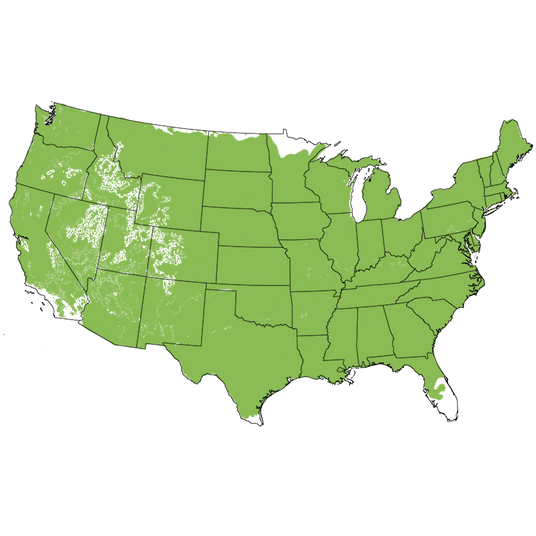
Growing Zones
Electric Pink-Purple Flowers Eastern Redbud Tree
- Showy Purpleish-Pink Flowers in Early Spring
- Native Tree Eastern North America
- Pollinator Friendly
- Widely Adapted and Easy to Grow
- Disease Resistant
- Beautiful Small Flowering Tree
- Mellow Fall Color
- Zig-Zag Bare Branches & Winter Interest
- State Tree of Oklahoma
Plant Eastern Redbud (Cercis canadensis) as an outstanding clarion call to herald the arrival of spring. Use this lovely native plant by itself as a specimen focal point or plant several to create a spectacular grouping.
This tree steals the show each spring. Electric, lavender-pink to magenta clusters of blossoms burst from the bare branches, long before any of the heart-shaped leaves emerge. Every branch is festooned with flowers!
The stunningly delightful presentation lasts for weeks in the spring! Garden designers rely on Eastern Redbud's flower power. They use this tree as the main attraction in the Spring Garden. Why not follow their lead?
This small, ornamental tree is a great choice. Native to most of the United States in one species or another, they are easy care. They also bring many desirable features into the landscape.
New leaves unfurl underneath the flowers and grow into a perfect heart shape for summer shade. Held on long petioles, the dark green leaves flutter and dance in a charming way whenever a breeze blows through the rounded crown.
As fall comes on and the nights get colder, the foliage mellows into a nice shade of harvest yellow. Tiny, purplish seed pods dangle and persist for a bit of textured winter interest.
Versatile Redbuds have a unique, sculptural shape that can vary from tree to tree. There are many ways to feature them throughout the landscape, and they make a natural partner for water features and woodlands.
Eastern Redbud is native to North America where it grows in woodlands and along creeks and rivers. It's primarily found as an understory tree growing along with taller hardwoods and conifers, so it can tolerate partial shade conditions.
Being native to the Americas and found naturally from Texas to the Great Lakes, the Eastern Redbud has super soil adaptability. It thrives in nearly any condition and grows about 2 feet a year until maturity.
Members of the Legume family, you'll see that similarity in their pea-like flowers and the seed pods! These popular springtime superstars sell out every year. Order your Eastern Redbud trees now!
How to Use Eastern Redbud in the Landscape
Grow the Eastern Redbud as a single specimen tree or as a small grove of 3 to 5 for a great woodland effect. When happy, these trees are very little maintenance and naturalize in the landscape beautifully.
They'll appreciate well-drained soil but are tolerant of wet, clay soil and alkaline conditions. This makes them perfect to use in a lawn setting. They won't mind the regular application of water required by turf.
Move into an established yard with a large evergreen tree? Plant an Eastern Redbud nearby to boost the appeal. Add a planting bed to the east, south or west of the larger tree and create a special spring display.
You'll love the contrast between the fluorescent Redbud flowers and the steady tones of the evergreen foliage. Mulch it and underplant with spring bulbs, small evergreen shrubs and a few summer flowering shrubs to create a year-round display.
These are a great choice for both home garden, and commercial plantings. They'll do very well in median parking strips. Use them as street trees along walkways or in park settings.
As you can imagine, Eastern Redbud is a premier choice for native landscapes or native restoration projects. Include them in your garden border plantings or marching along property lines.
For a large hedge where the canopies touch, plant them 6 - 8 feet apart on center. You'll measure from the center of one to the center of the next. Expand that spacing from 10 - 12 feet apart to establish individual trees.
Train the Eastern Redbud as a single trunk tree or buy a multi-trunk clump for a more natural look. Try one at the corner of your house to anchor your foundation planting.
Use 2, 4 or 6—however many you have room for—on either side of a driveway to create a magnificent allée. What a treat in spring!
We aren't sure if there is anything prettier than an Eastern Redbud in full bloom at the edge of a pond or water feature. Why not plant them with slightly tilted trunks, so that the canopy appears to reach towards the water?
#ProPlantTips for Care
Plant these deciduous trees in well-drained soil. Give them plenty of regular water, especially when young and in drier climates. Tolerant of part shade and full sun
In western USDA hardiness zone 9, Eastern Redbud benefits from morning sun and protection from the hot afternoon sun. In the hotter climates, give the Eastern Redbud plenty of mulch. Use at least 4 inches of wood chips spread to 3 feet outside of the canopy of the tree. Highly resistant, prune to ensure there’s plenty of air circulation to help prevent verticillium wilt, canker or other diseases, and prune out any winter dieback in early spring.
Be patient with young trees and small trees. Oftentimes, they are slow to send out leaves in spring, so give them time.
This is one of our prettiest native trees of North America. You'll love the look of the bare branches clothed in great clusters of early spring blossoms. Find the Eastern Redbud tree for sale at NatureHills.com!
Frequently Asked Questions
Why Eastern Redbud Trees? Is the Eastern Redbud a good tree?
The Eastern Redbud is a fantastic ornamental with early spring flowering, 4-season interest, and a wide range of adaptability, tolerance and pest resistance for many hardiness zones!
Is the Eastern Redbud a fast-growing tree?
The Eastern Redbud is considered a fast-growing tree that can easily attain a growth rate of about a foot a year in optimal conditions.
How big does an Eastern Redbud get?
The native form of the deciduous Eastern Redbud tree can grow 20-30 feet in height with a spread of 15-30 feet. Other cultivars and dwarf varieties can have a wide range of size options.
Where is the best place to plant a Redbud tree?
Plant Redbud trees in moderately moist and fertile soil that drains well. Select a site in full sun, however, Cercis canadensis also does well in partial shade as an understory tree.
What shipping options do you offer?
NatureHills.com works closely with our growers and nursery professionals to ensure we ship when it is most appropriate for your area. Our goal is to deliver the hardiest plants by avoiding extreme high and low temperatures. Check out our shipping schedule for more information and to learn our wills and won’ts when it comes to shipping plants. Find the Eastern Redbud for sale here at NatureHills.com!

